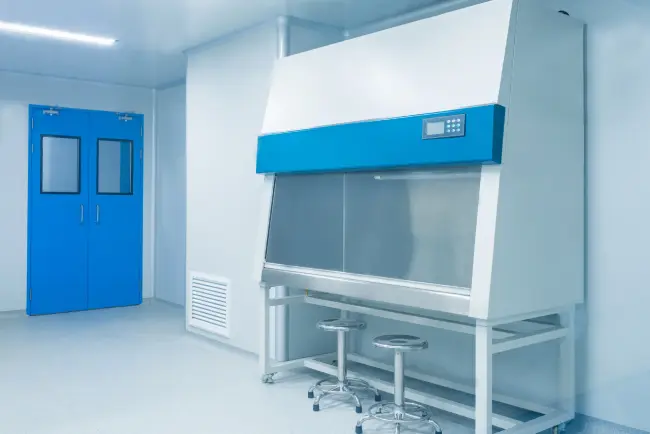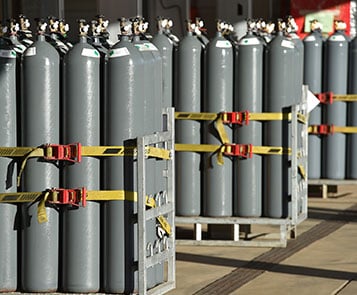Deep-Dive BSC Certifications Promote Top Performance and ROI
Biological safety cabinets (BSCs) are crucial to innovation and production, and they demand special maintenance, including periodic cleaning and certifications.
But it's important for lab managers to understand that certification isn't just a routine requirement. In-depth certifications can yield the data, when properly analyzed, that enable managers to ensure these key appliances operate efficiently and at peak performance.
Managers can use this data when benchmarking the cabinet’s integrity, containment capacity, and the like. This can enable proactive maintenance—and avoid unnecessary downtime and any compromise in experimental integrity through substandard performance.
In fact, certification information and analysis can help managers create a strategy for maximum return on investment (ROI) over the life of the appliance. Certification can also aid managers to decide when they should retire any given cabinet when it's becoming obsolete and no longer worth the maintenance cost.
BSC Certification: Specific Usage Factors
In a prior blog, we covered the various existing basic certification standards managers must apply. They include the NSF guidelines, which ensure health and safety concerns for biosafety agents 1-4.
The other standards are those from the manufacturer—which apply without factoring in a cabinet’s specific usage or its placement in the lab or facility. But, to gather unique data, there are also more complex and specific variables to look for during each machine certification. They include:
- Proper usage: The actual daily operations of the units are a factor. Ideally, all users will run the appliances only for their most appropriate applications. The users should also be up to date with the manufacturer’s specifications and recommendations. Prior to running the BSC, the operator might even want to create a checklist, with the following sorts of questions:
- Pre-work, is the unit properly warmed up?
- Are there pre- and post-work wipe-downs to be performed?
- Examine the work surface—is it cluttered?
- Are we following aseptic techniques?
Certifications and review may show the lab doesn’t follow best practices and proper usage procedures. In that case, managers may either enforce stricter usage policies—or increase the number of certifications and maintenance pit-stops.
- Optimum monitoring and maintenance: It’s important to factor in the level of skill and training the maintenance technicians have on the particular appliances they support. Ideally, a lab will have access to “power” technicians—these personnel are specially trained and up to date on their BSCs. They will closely monitor the appliances and ensure they are routinely certified, cleaned, and maintained, based on usage. The technicians also will ensure peak maintenance and performance for cabinets, and for the greatest length of time. Less trained technicians will be incapable of such proactive maintenance, and managers should also factor in these variables into their BSC support planning.
- Long-term operational effects: The types of equipment and materials the lab personnel use in the BSC can cause long-term effects to the machine. Managers must determine if these various applications have any type of cumulative impact on the BSCs and their performance. They then can react accordingly to protect the machines. For instance, the prompt cleaning of spills can prevent detritus build-up—while routine scouring of the appliance can help avoid clogs. Again, it's key that certification reveals the actual details of usage.
Certification Helps BSC Replacement
It’s important for managers to make certification a strategic part of their long-term lab or facility maintenance plans. They should consider certification as an opportunity to review the status of BSCs, which may be old and obsolescent. So, during routine certifications managers should gather key data to help them decide what models to swap out. They should check for:
- Outdated technology and design: Manufacturers update their models regularly, based on NSF guidelines and new technologies. Older units obviously don't automatically receive these updates, which prevents proper certification. These older machines can require special certifications, which can be difficult and are more time consuming than typical ones. The technicians conducting them may need to perform lengthy tests and disinfection protocols before the process can even begin, costing extra time and money.
- Power consumption/performance: With rising energy costs and greater eco-sensitivity, managers should factor in the power consumption of their BSCs—the older units especially. Each generation of BSC displays better power management and performance capabilities. This means less energy cost with performance boosts—contributing to a better ROI and a greener profile that older machines just can’t deliver.
- Parts availability: When verifying the BSC model and year of make, managers must also consider its future maintainability. The older the BSC, the more likely it is out of production—and that the manufacturer no longer supports it or makes parts for it. A unit with substandard or third-party components will likely become a challenge to properly certify. Eventually, such a unit will also face performance degradation.
- Pending operational crash: As with any device or appliance, a BSC becomes worn over time and eventually will simply cease operating properly. The machine’s overall reliability is also likely to drop over time, as well. And the older the BSC, the more likely there may be a major malfunction. That can potentially put employees in harm’s way and cause a research slowdown.
- Ideal replacement opportunities: Ultimately, with proper certifications and analysis, it’s possible to detect declining performance and past (and potential future) crashes. Managers can weigh the ROI on an existing unit versus the cost of a new machine—one that offers greater capabilities, improved performance and reliability, and increased power savings. This will help a manager make the best choice when deciding if a machine should be retired or receive a costly repair.
Lifting the BSC Maintenance Burden
Owning, operating, and certifying a BSC can be complex and time consuming. Many lab managers outsource the certification and maintenance of the BSC to simplify their own lives. A capable maintenance partner can lift the certification and maintenance burden. We’ve examined the need for an enterprise-level BSC service provider in a prior blog. To ensure BSC certification is done right, Triumvirate Environmental offers a full set of services for your needs. Talk to us today.






